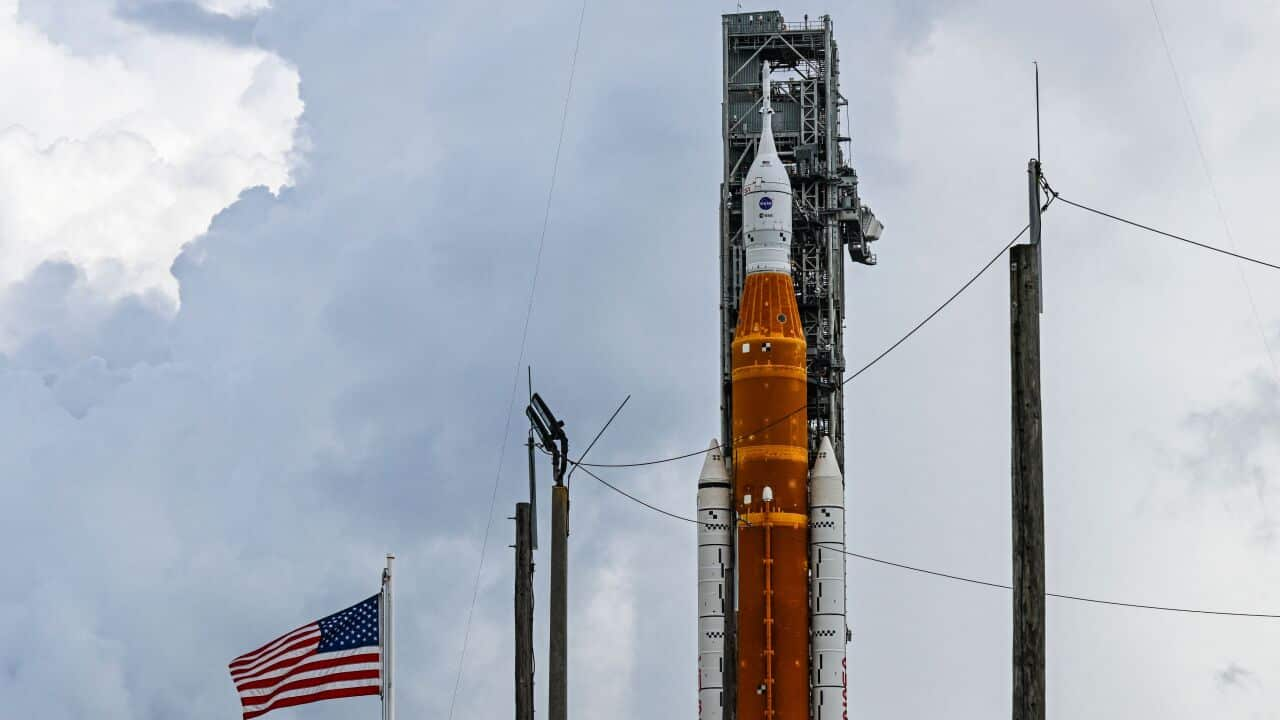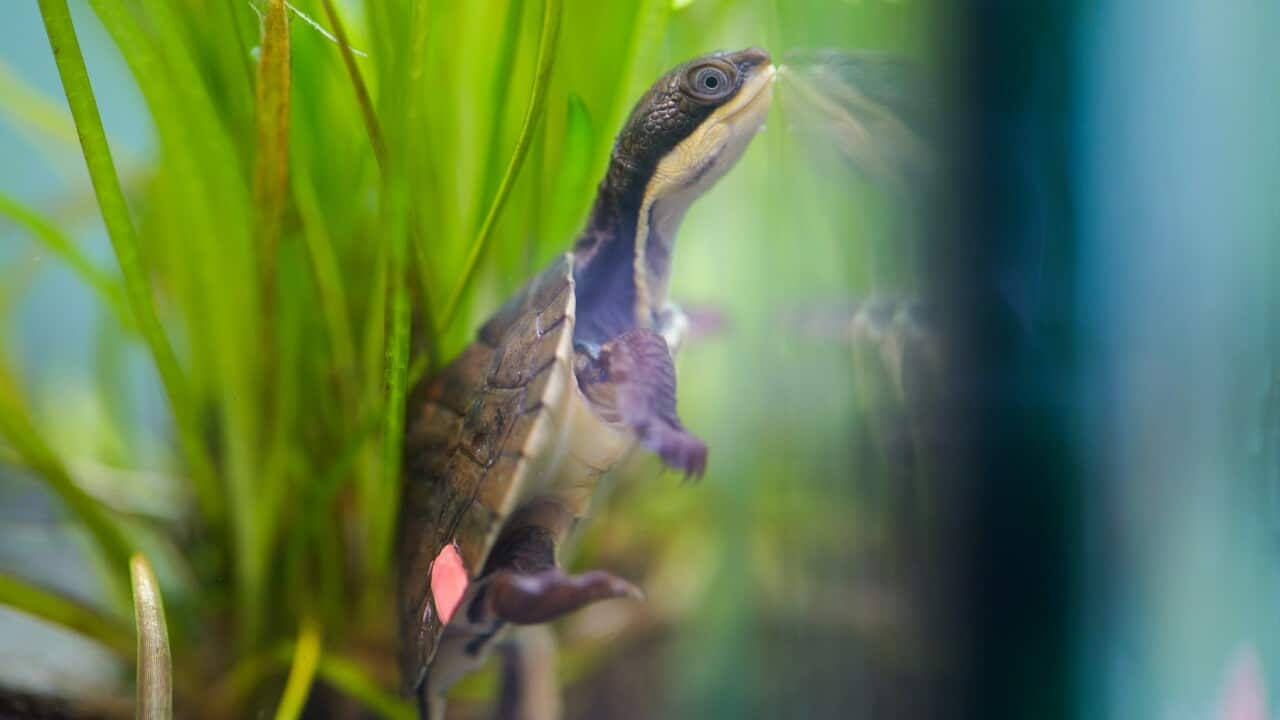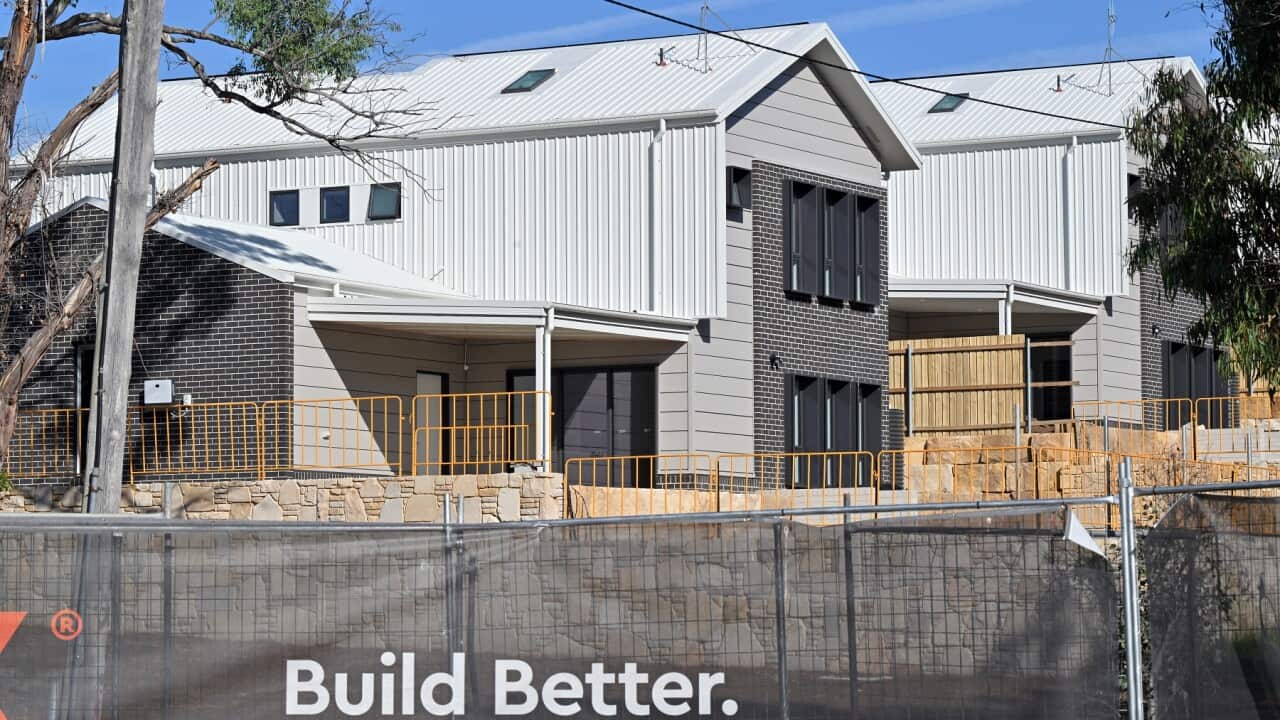Italian
La NASA ha cancellato un secondo tentativo di far decollare il suo nuovo razzo alto 30 piani e inviare una navicella di prova senza equipaggio verso la Luna, dopo che gli ingegneri hanno scovato una perdita di carburante.
"7:15 a.m. Eastern Time here at the Kennedy Space Center in Florida. Got an update on the liquid hydrogen loading. They are in stop flow at the moment. There was a leak detected in the engine cavity."
I responsabili del decollo hanno cercato di tappare la perdita di sabato fermando e riprendendo il flusso di idrogeno liquido super-freddo, ma il tentativo non ha funzionato.
Brad Tucker è un astrofisico all’Australian National University a Canberra.
Ha dichiarato alla ABC che, mentre il conto alla rovescia proseguiva verso il momento del decollo, gli ingegneri addetti al lancio aumentavano la quantità di carburante che fluiva dentro il razzo, spingendo contro la pressione.
“They will do this process manually. So essentially, in order to account for this slow fuel, they did do it manually, that would a few points. They ran over pressure only for a few seconds, and there was worried maybe that damage the seals, the data will say if that's the case or not, they then went to the full kind of fast fuel the normal flu rate, flip the flow rate. At that time, that's when they started to see this leak, way bigger way, way, way more massive than anything they saw on Monday. And it became very apparent very quickly that that launch wasn't going to happen."
Con grande disappunto della folla radunatasi nelle spiaggie della Florida per lo storico lancio, è arrivato l’annuncio che il decollo era stato interrotto.
"This is Artemis Launch Control. Launch Director Charlie Blackwell-Thompson just called a scrub for the launch attempt today, the second launch attempt. Again Launch Director Charlie Blackwell-Thompson calling a scrub for the day here at the Kennedy Space Centre Launch Complex 39-B."
David D'Alessandro era tra le persone che si erano radunate insieme per l’evento.
"I dragged my wife down here. We got we got here yesterday at 7 a.m.. So we've been here quite a while. We slept on the grass last night just to make sure we had a good spot, because I kind of was expecting being a Saturday was going to be a lot more people here. There are a lot of people, but I thought there would be even more. So it's kind of overwhelming that they scrubbed it. We were here on Monday for about 48 hours also, and they scrubbed (scrapped) that. So I'm going to come back."
L’amministratore della NASA Bill Nelson ha dichiarato che il lancio sarà rimandato fino ad ottobre se il razzo dovesse venire fatto tornare indietro all’hangar per riparazioni.
Anche il primo tentativo lunedì è stato rovinato da una fuoriuscita di idrogeno, ma queste perdite si trovavano in un altro punto.
"The leak is in the plate cavity around the quick disconnect indicating that there is a QD seal leak. This is not the same as last time. Want to note that again, not the same QD as the previous hydrogen leak. This one has been tight in five previous flows."
Lo scopo della missione Artemis 1 è di verificare che la navicella Orione, che si trova in cima al razzo di 98 metri, sia sicura per il trasporto in futuro degli astronauti.
Al posto degli astronauti ci sono manichini equipaggiati con sensori quando durante la missione si effettua il volo di prova, per registrare i livelli di accelerazione, vibrazione e radiazione.
Saranno necessari al veicolo spaziale diversi giorni per raggiungere la Luna, volando a circa 100 chilometri nel punto più vicino.
La navicella poi accenderà i suoi motori per arrivare ad un’orbita retrograda distante 64mila chilometri oltre la Luna.
Il viaggio è stato programmato per durare circa sei settimane e uno degli obiettivi principali è di collaudare lo scudo termico della navicella, che a 16 piedi di diametro è il più grande mai costruito.
English
NASA has scrapped a second attempt to get its new 30-storey rocket off the ground and send an uncrewed test capsule toward the Moon after engineers detected a fuel leak.
"7:15 a.m. Eastern Time here at the Kennedy Space Center in Florida. Got an update on the liquid hydrogen loading. They are in stop flow at the moment. There was a leak detected in the engine cavity."
Launch controllers tried to plug Saturday's leak by stopping and restarting the flow of super-cold liquid hydrogen, but the attempts did not work.
Dr Brad Tucker is an astrophysicist at the Australian National University in Canberra.
He tells the A-B-C that as the countdown kept ticking towards time for lift-off, launch engineers increased the rate of fuel flowing into the rocket, pushing over pressure.
They will do this process manually. So essentially, in order to account for this slow fuel, they did do it manually, that would a few points. They ran over pressure only for a few seconds, and there was worried maybe that damage the seals, the data will say if that's the case or not, they then went to the full kind of fast fuel the normal flu rate, flip the flow rate. At that time, that's when they started to see this leak, way bigger way, way, way more massive than anything they saw on Monday. And it became very apparent very quickly that that launch wasn't going to happen."
Much to the disappointment of the crowds gathered across Florida beaches to watch the historic launch, the announcement came that the launch was off.
"This is Artemis Launch Control. Launch Director Charlie Blackwell-Thompson just called a scrub for the launch attempt today, the second launch attempt. Again Launch Director Charlie Blackwell-Thompson calling a scrub for the day here at the Kennedy Space Centre Launch Complex 39-B."
David D'Alessandro was among those gathered for the event.
"I dragged my wife down here. We got we got here yesterday at 7 a.m.. So we've been here quite a while. We slept on the grass last night just to make sure we had a good spot, because I kind of was expecting being a Saturday was going to be a lot more people here. There are a lot of people, but I thought there would be even more. So it's kind of overwhelming that they scrubbed it. We were here on Monday for about 48 hours also, and they scrubbed (scrapped) that. So I'm going to come back."
NASA Administrator Bill Nelson says the launch will be delayed until October if the rocket has to return to the hangar for repairs.
The first attempt on Monday was also marred by escaping hydrogen, but those leaks were elsewhere.
"The leak is in the plate cavity around the quick disconnect indicating that there is a QD seal leak. This is not the same as last time. Want to note that again, not the same QD as the previous hydrogen leak. This one has been tight in five previous flows."
The purpose of the Artemis 1 mission is to verify that the Orion capsule, which sits atop the 98-metre rocket, is safe to carry astronauts in the future.
Mannequins equipped with sensors are standing in for astronauts on the mission when it does test launch, and will record acceleration, vibration and radiation levels.
It will take several days for the spacecraft to reach the Moon, flying around 100 kilometres at its closest approach.
The capsule will then fire its engines to get to a distant retrograde orbit of 64,000 kilometres beyond the Moon.
The trip is expected to last around six weeks and one of its main objectives is to test the capsule's heat shield, which at 16 feet in diameter is the largest ever built.
Report by Essam Al-Ghalib




